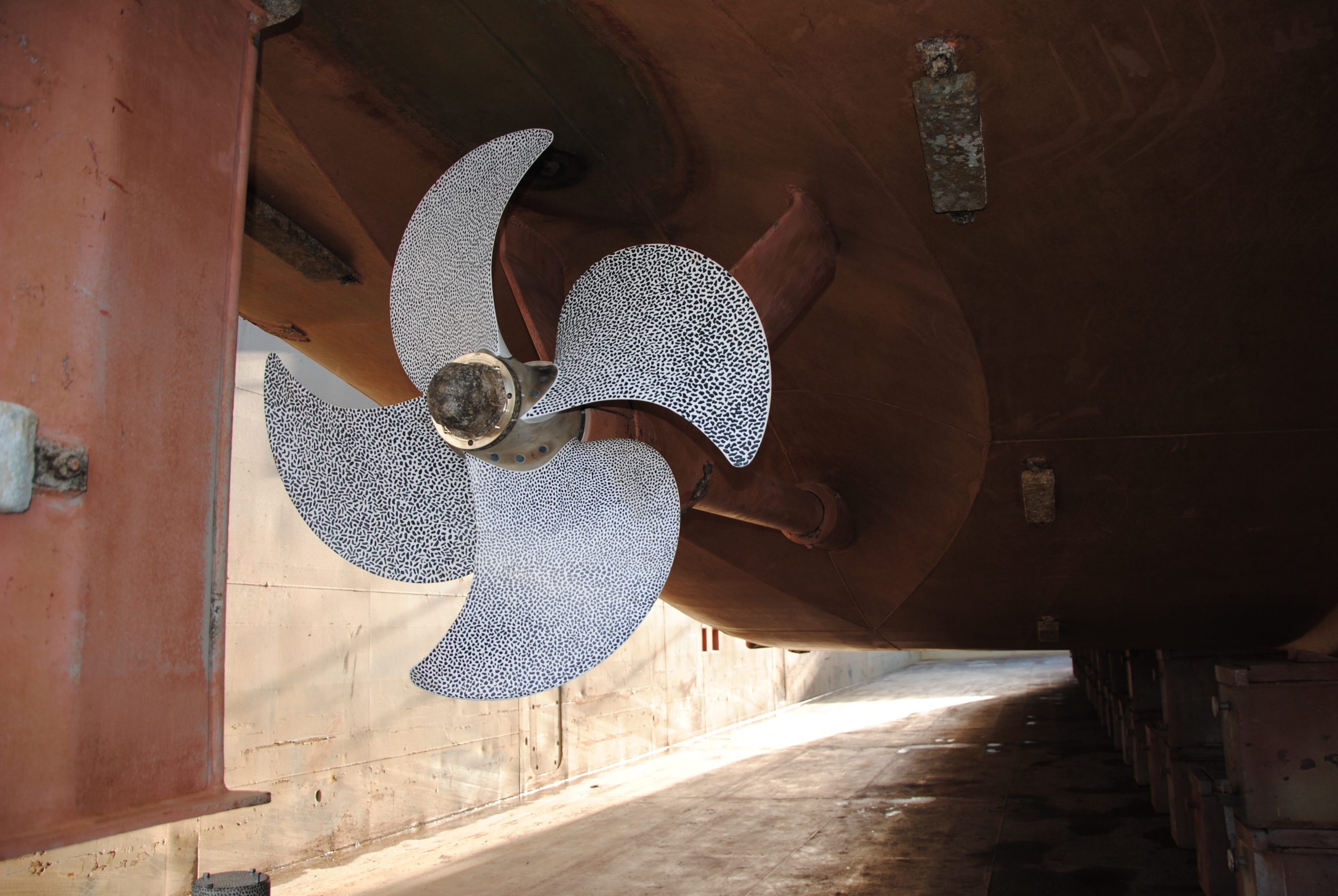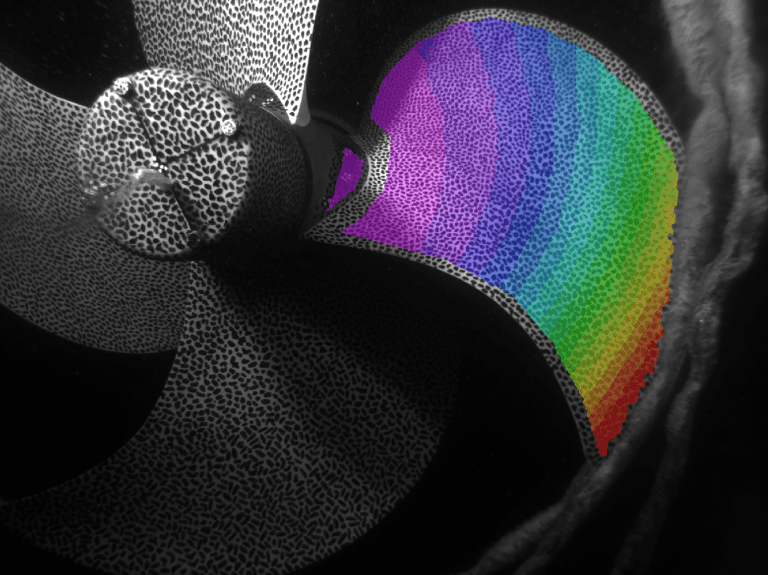Traditionally, ship propellers are made of bronze. For the Greenprop project, PhD candidate Pieter Maljaars studies flexible composite propellers to see how they can perform better than bronze.
Pieter Maljaars with traditional bronze ship propeller. (Photo: Jos Wassink)
Composite propellers could be more efficient, less susceptible to cavitation (the damaging generation of vapour bubbles at the propeller blades) and quieter in operation. Not to mention the avoidance of galvanic corrosion and the minimisation of magnetic radiation, which is of special interest for navy vessels such as minesweepers.


A full-scale test of a one-metre diameter four-bladed propeller under 280 kilowatts of power showed a deformation of a couple of centimetres at the tips of the blades. According to PhD candidate Pieter Maljaars, the deformation in composite blades can be about ten times greater than in bronze. The maximum force on the blades during the test was about 13 kilo Newton.
Maljaars aims not so much to reduce the deformation under power, as to use it to optimise the shape of the blade. The bending of the blade has little effect on the propeller’s thrust, but the rotation of the blade, alias the pitch of the propeller, does have a large impact. At a given speed, the greater the pitch, the bigger the forces.
So Maljaars thus aims to design a composite propeller that decreases the blade’s pitch at higher forces.
He explains that he combines software packages from hydromechanics, and from material mechanics to calculate the deformation of composite propeller blades. Or, as the Greenprop webpage explains: ‘The design process of propellers is solving a complex design problem with conflicting design objectives. In the case of flexible composite propellers, the additional ability to tailor the stiffness of the propeller expands the design space, allowing the propeller design to be improved with respect to efficiency, cavitation inception, and acoustic signature.’


The unique measurements of the behaviour of a one-metre composite ship propeller under load showed the distribution of deformation over the blade. Maljaars will use the experimental data to validate the design software for composite propellers.
Before composite propellers can be used in practice, Maljaars remarks, studies need to be done into material fatigue. Unlike their bronze counterparts, flexible composite blades will show unsteady deformations at each turn because the flow velocity varies according to the position of the blade, with typically the minimum at 12 o’clock and the maxima at 6 o’clock. It’s a fair but open question how the material responds to such frequent deformations.
Do you have a question or comment about this article?
j.w.wassink@tudelft.nl


Comments are closed.